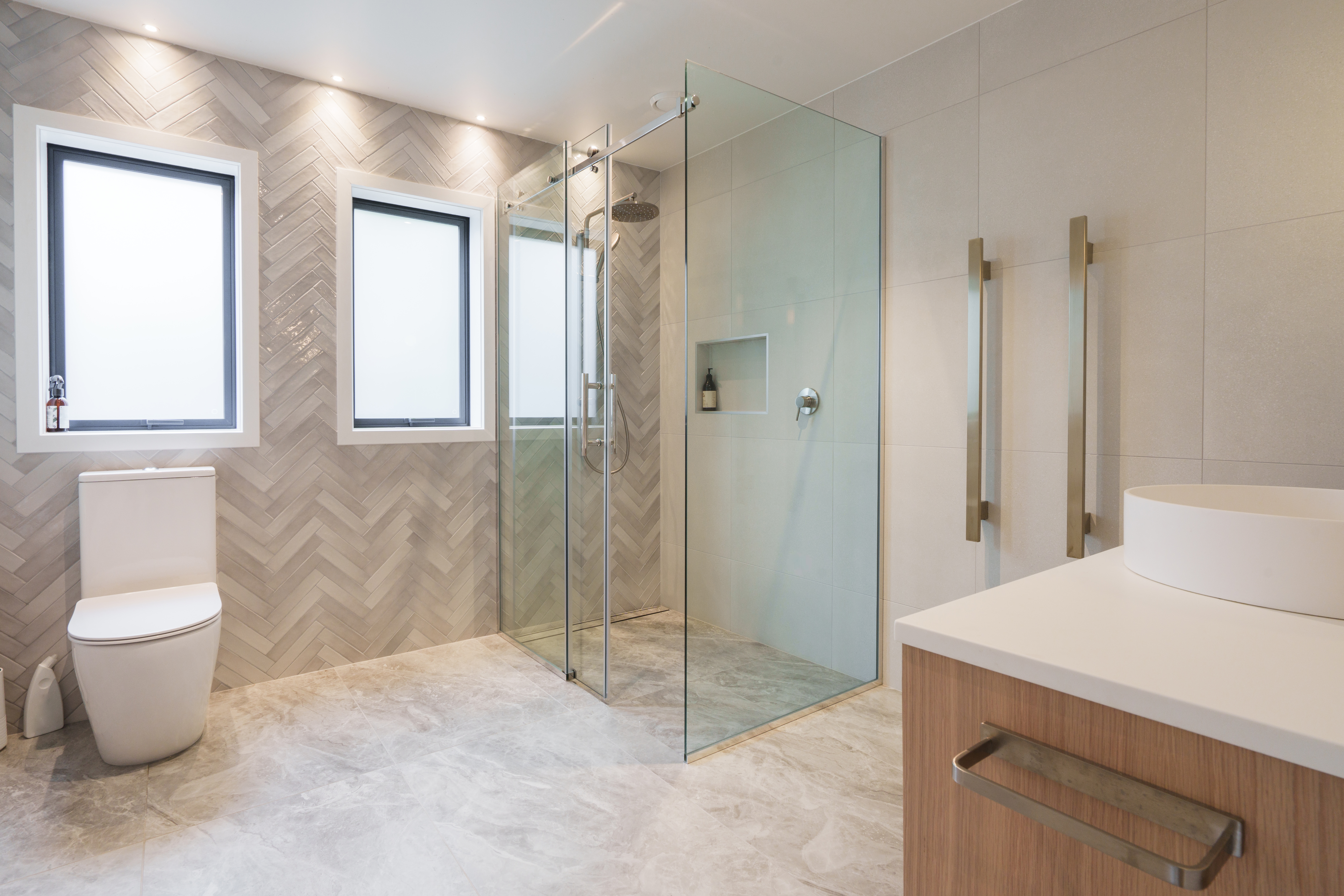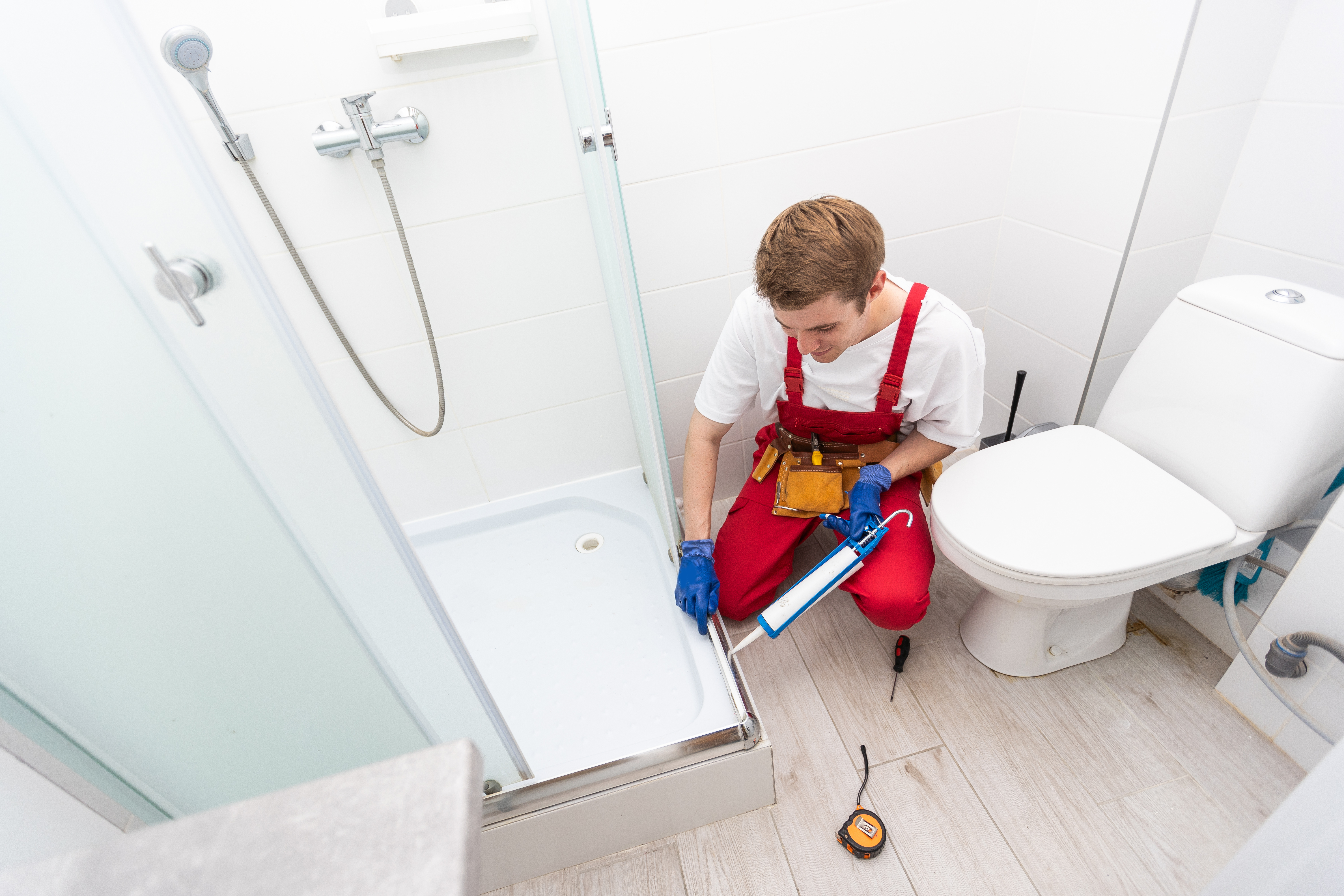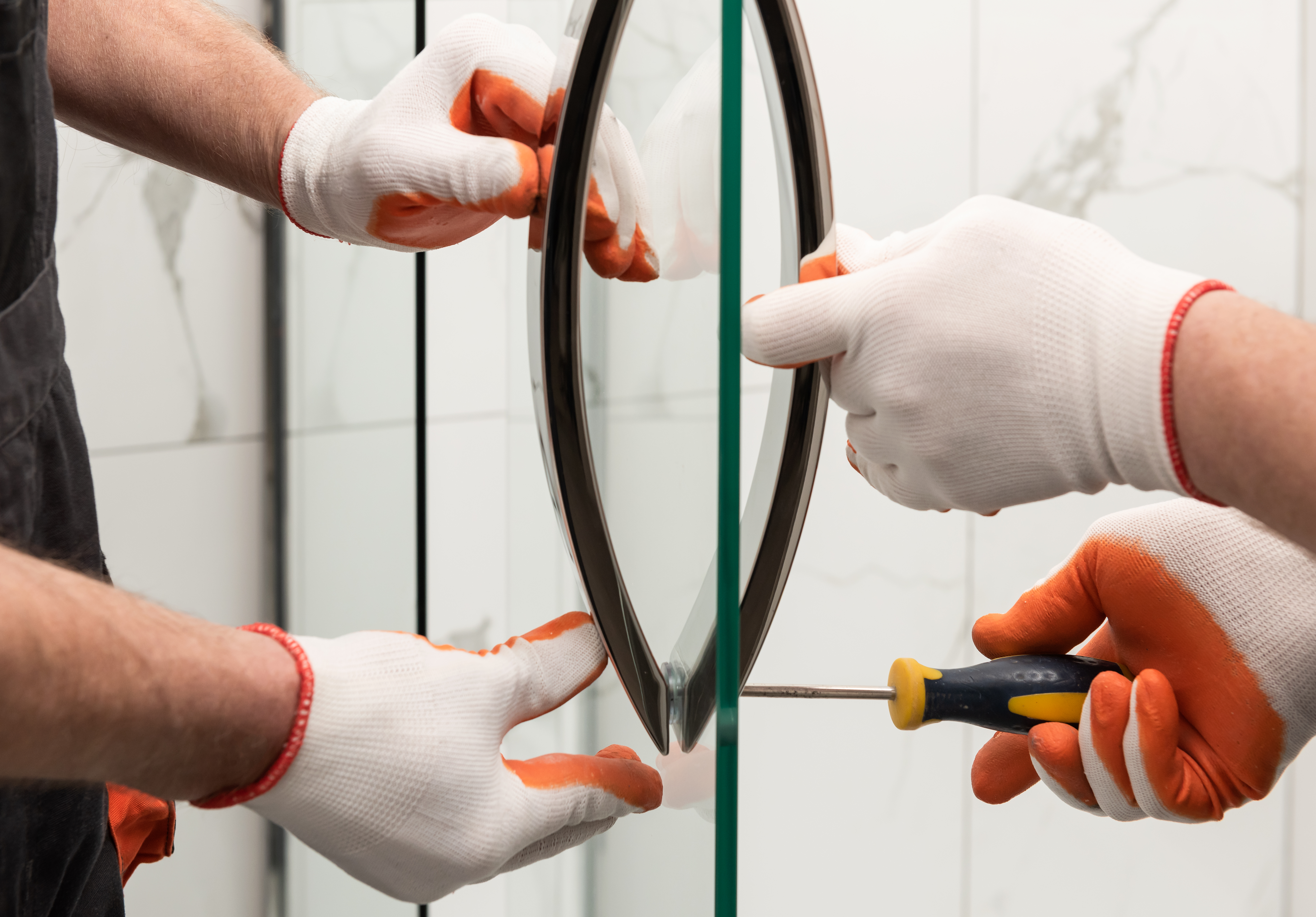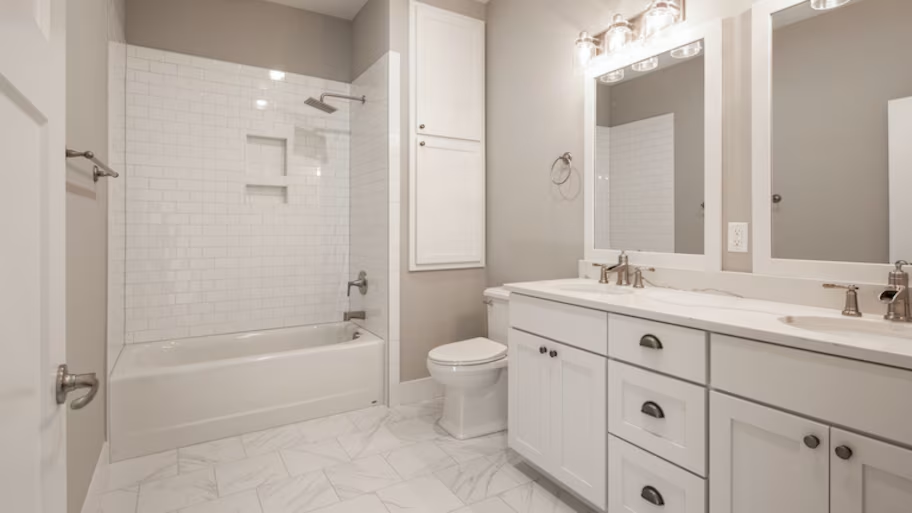
The cost to add a bedroom and bathroom can pay off with an increase in your home’s value and more space for you and your family. Costs vary by project scope.
Get rid of squeaks and leaks


The most common causes of sticky sliding doors are track buildup and worn rollers.
Water leaks often result from misaligned panels or worn seals.
Loose rollers or uneven installation will cause doors to jump off the track.
Most issues can be fixed without needing to replace the entire door.
Cracked glass and severe misalignment need to be left to the pros.
Sliding shower doors offer a sleek, space-saving design, but when they start to stick, rattle, or leak, that style can quickly turn to frustration. What once slid so effortlessly now creaks, groans, or refuses to budge at all. Time passes, and water, soap scum, and regular use wear down the rollers and clog the tracks. This guide outlines the five most frequent sliding shower door problems, how to repair them yourself, and when it's time to bring in a professional.
If your shower door no longer glides but drags, squeaks, or skips, the first thing to check is the track. Hair, soap scum, and mildew often accumulate in the bottom rail, which clogs up the rollers and causes friction.
Poor installation is another common sliding shower door problem that prevents the door from gliding smoothly. If the door is not hung level or has shifted, it may lean slightly off-track and rub against the frame.
Clean tracks with a toothbrush and a mild cleaner. For limescale build-up, use vinegar.
Check rollers and replace damaged ones with a duplicate kit if the original is broken.
Apply silicone spray to lubricate rollers without attracting dirt.
If feasible, raise and adjust the door height with roller brackets.

Leaking in your shower door can seem like a plumbing issue, but it's more likely due to a misaligned or compromised seal. Sliding doors rely on tight seals, proper slope, and closed panel overlaps to keep water in place.
If your door leaks in the bottom corners or at the ends of the track and onto the floor, there's a good chance the vinyl sweep, side jambs, or bottom guide aren't sealing properly. Even a slight motion of the frame can create sufficient space for water to escape. Over time, it leads to water buildup, warped flooring, or mildew in surrounding grout lines.
Check the bottom sweep; if it is cracked, dry, or missing, replace it.
Re-seal gaps with waterproof silicone caulk along the frame or where the glass meets the tile.
Ensure you secure the side rails and door fasteners for a tighter fit.
Make sure the door overlap is secured correctly so that the inner panel doesn't stick out when showering.
Tip: Corner gaps are often the source of leaks in sliding glass doors. Use a light from the other direction to spot leaks.
If your door drops or is on the verge of falling, don't push it. A dropped sliding shower door typically means a roller has slipped or completely snapped. The problem may be because of misalignment, rusty hardware, or years of pulling on one side with more force than the other.
Gently tilt and set the door back onto the track.
Inspect the rollers for looseness or stripped screws.
Swap defective wheels with the same hardware from a shower door kit.
Check the guide rail, as a bent or warped track may need to be replaced.

Your sliding shower door should be solid to push, not as if it's about to wobble out of the frame. If you hear rattling or feel the glass shift when the sliding door rolls, it indicates something is loose in the background. Common culprits of a rattling sliding shower door are worn roller brackets, missing bumpers, or loose door frame fasteners.
Glass shattering is more than inconvenient; it's a signal that your shower door's support system is failing. If this problem is left unattended, the movement can lead to cracks or even total disconnection of the door.
Tighten all screws on the roller assembly and door handles.
Inspect guide clamps and brackets to ensure they're tightened and secure.
Replace the bumpers that support the glass at the end of its glide path.
Be careful not to over-tighten, which may stress or chip the glass.
Even if your door is working flawlessly, keeping it clean can be a challenge. Sliding doors collect dirt in the tracks, develop mineral deposits on glass, and collect mold in seals. These problem areas, especially the bottom track where water settles down, are prone to buildup. With time, that grime isn't only unsightly but can become problematic. Mildew ruins rubber gaskets, and mineral buildup results in friction in the rollers of your sliding shower door.
To clean the tracks, spray them with vinegar and let it sit for about 10 minutes, then scrub with a toothbrush.
Use a water-repellent on the glass to reduce spots.
Use a shower daily spray to prevent mildew in seals.
Dry tracks after each shower to avoid water buildup.
Most problems with sliding shower doors are fixable with basic tools and a little patience; however, some issues may require more attention. If your door is seriously misaligned, here are your warning signs that it's time to seek assistance.
Breaks or cracks in the glass
Frame pulling away from the tub or tile
Door keeps falling off track after repairs
Seals fail repeatedly, even when they are replaced
Water leaks behind the wall or floorboards
If you don’t feel comfortable tackling these issues yourself, hire a shower door installer near you.
Keep your shower doors sliding effortlessly with a few simple habits:
Clean the track weekly to prevent buildup.
Rinse seals after each shower to prevent mildew growth.
Inspect rollers every 3 to 6 months for wear.
Lubricate with silicone spray yearly.
Inspect loose screws when cleaning.
These guys made remodeling my floors and kitchen a very easy process especially for someone who doesn’t understand how it works. Thank you so much!
Had water damage in guest room and bathroom room ceiling, team did a great job.
You won't regret hiring these guys. Installer were at my house when I was told there would be here. They worked efficiently and cleaned up nicely. The windows look GREAT!! Thank you Lock Tight!!
They gave the best price for a high quality Carrier split 2 ton init fully installed. Highly recommend them.
New England remodeled our dated ugly kitchen. It was outstanding. We were so impressed with their care and professionalism we hired them to remodel our master bath. From start to finish, their entire team were A+++. Yana and Maria helped with the product selection, Frank continually kept...
Was getting water in the bottom of our refrigerator. Cesar Cabrea was the technician who came to the house and knew what the problem was and fixed it.
Saved my project by replacing a skylight that another company completely botched. Sunny and team were extremely professional.
Workers were very knowledgeable & here every day. Very respectful of my home & cleaned up after each day.
We hired Billy to remodel a bathroom in our condo. He was outstanding. Honest, friendly, on time and always kept my place clean. . We are very pleased with our bathroom. Highly recommend.
Tino and his crew did a great job. He responded quickly to my questions, did the work on time, and everything they did looks great.
From average costs to expert advice, get all the answers you need to get your job done.

The cost to add a bedroom and bathroom can pay off with an increase in your home’s value and more space for you and your family. Costs vary by project scope.

Here's a look at the cost to build a garage with an apartment on your property for a rental or in-law apartment.

Curious how much a shower remodel costs? From new fixtures to full installations, we have the prices you need to know to establish a shower remodel budget.

This handy guide will walk you through 17 types of bathroom sinks to help you decide on the best one for your bathroom remodel.

Learn how to build a DIY dog wash station to make your pup’s bathtime a less backbreaking job that leaves your family bathroom free from dog hair and dirt.

Small bathroom remodel costs depend on a number of factors—like what exactly you’re upgrading and the size of the room. This guide will help you budget.